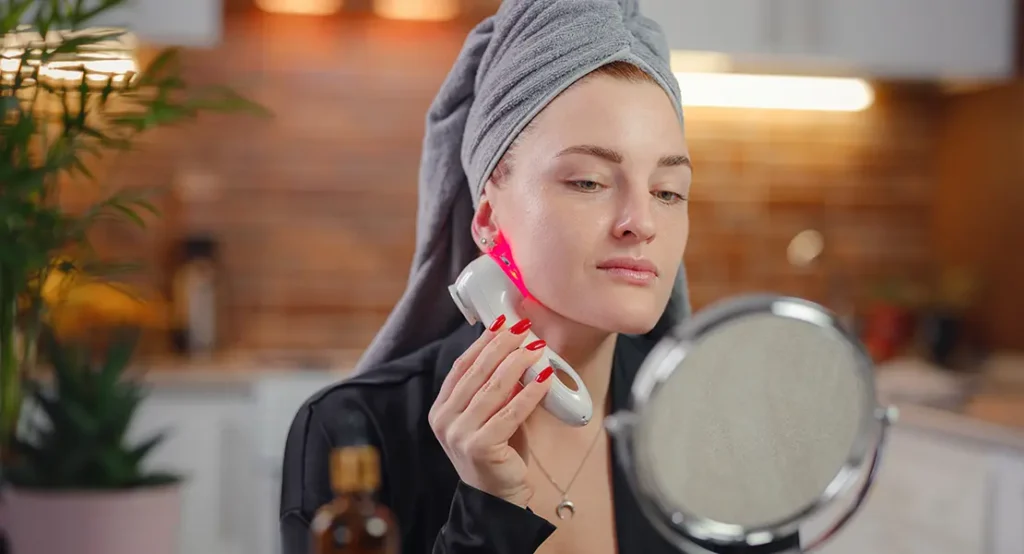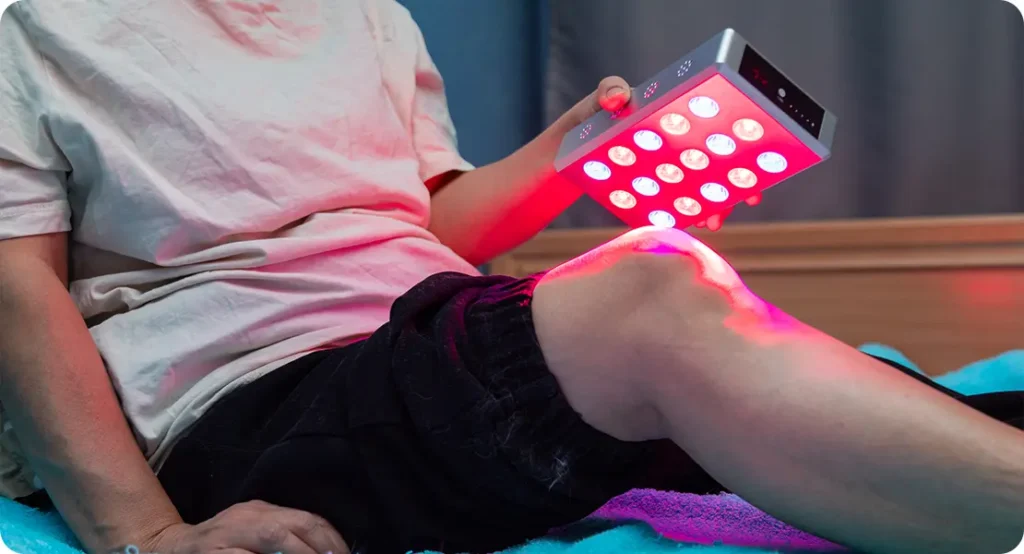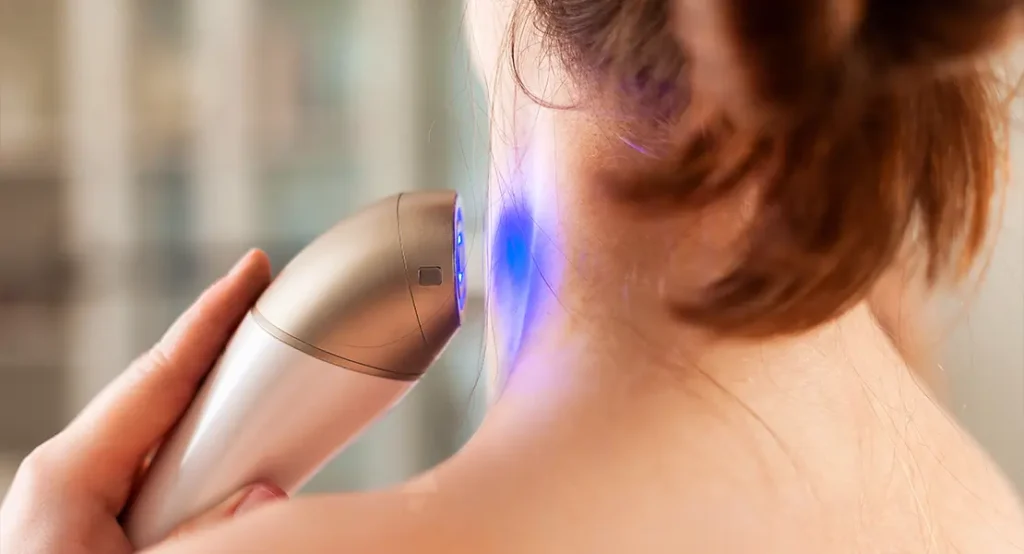At-home skincare devices are gaining massive popularity and for good reason. They promise spa-quality results, improved skin texture, and youthful glow all without ever stepping foot outside your house. From LED light masks that claim to reduce acne and fine lines, to derma rollers that stimulate collagen production, and even ultrasonic skin cleansers that offer deep cleansing these gadgets are flooding the beauty market and our social media feeds.
With sleek packaging and influencer-backed testimonials, it’s easy to believe that these tools are miracle workers. And in some cases, they can be. However, just because a device is available over the counter doesn’t always mean it’s safe or suitable for every skin type.
Before you incorporate one of these devices into your skincare routine, it’s crucial to understand how they work, what skin concerns they can actually help with, and most importantly what risks they might pose if misused or overused.
In this article, I’ll guide you through:
- The most popular types of at-home skin tools on the market
- Their scientific benefits (and what’s just hype)
- Potential side effects and when to avoid them
- How to use them safely and effectively for real results
Whether you’re looking to treat acne, reduce wrinkles, or just elevate your self-care routine, understanding both the promise and pitfalls of these tools is key. Your skin deserves informed, thoughtful care not just the next trending gadget.
What Are At-Home Skin Devices?
At-home skin devices are non-invasive, handheld gadgets designed to bring elements of professional skincare treatments into the comfort of your home. These tools aim to target common skin concerns like acne, aging, dullness, enlarged pores, and uneven texture often with the promise of visible results over time. You’ve likely come across them on social media, YouTube tutorials, or online beauty stores, where influencers and brands tout their benefits for achieving smoother, clearer, and more youthful-looking skin.
But what exactly do these devices do and how do they work?
Most at-home skin tools are adapted from treatments once reserved for dermatology clinics or medispas. While they often operate at lower intensities than professional-grade machines, they are designed to mimic clinical techniques, often using light, vibration, microcurrents, or physical stimulation to create change in the skin.
Popular Types of At-Home Skin Devices Include:
LED Light Therapy Masks
- These futuristic-looking masks use light-emitting diodes (LEDs) most commonly red or blue light to address different skin concerns.
- Red light is often used to stimulate collagen, reduce inflammation, and combat signs of aging, while blue light targets acne-causing bacteria.
- Many users report improved texture and reduced breakouts with consistent use, but results vary and depend on frequency and quality of the device.
Microneedling Derma rollers
- These handheld rollers contain hundreds of tiny needles that create micro-punctures in the skin.
- This process is meant to trigger the skin’s healing response, promoting collagen production and improving the appearance of scars, fine lines, and pigmentation.
- While the concept is backed by science, improper use at home can lead to skin irritation, infection, or scarring.
Ultrasonic Skin Scrubbers
- These sleek devices use high-frequency vibrations to lift dirt, oil, and dead skin cells from the surface of the skin.
- Often used after cleansing, they help improve product absorption and leave the skin feeling smoother and cleaner.
- However, overuse or incorrect technique can lead to sensitivity or redness.
Microcurrent Devices
- Known as the “non-surgical facelift,” microcurrent tools send low-level electrical currents through the skin to stimulate facial muscles.
- This can result in subtle lifting and toning effects, especially around the jawline and cheeks.
- Consistent use may also improve circulation and skin firmness, but results are usually temporary and require maintenance.
Radiofrequency (RF) Devices
- These tools use radiofrequency energy to gently heat the deeper layers of the skin, stimulating collagen and elastin production.
- RF devices are popular for their ability to target skin laxity, improve elasticity, and reduce the appearance of fine lines.
- They’re generally considered safe but must be used cautiously to avoid overheating or damaging the skin.
Are They Actually Effective?

The short answer? Some at-home skin devices can be effective but not all are created equal, and their success depends on several key factors. These include the type of device, the science behind it, how consistently and correctly it’s used, and whether your skin is an appropriate candidate for that particular technology.
When They Can Work:
- Devices like LED light therapy masks have some scientific support, especially those using red and blue wavelengths.
- Red LED light has been shown to help stimulate collagen production, improve circulation, and reduce inflammation making it potentially beneficial for those targeting fine lines or dull skin.
- Blue LED light targets acne-causing bacteria (Cutibacterium acnes), and when used regularly, it may help reduce breakouts and oiliness in acne-prone skin.
- Similarly, microcurrent devices can help temporarily tone and lift facial muscles, giving the appearance of firmer, more sculpted skin.
- These tools are often praised for their ability to subtly enhance facial contours when used consistently, though the results are generally short-term and require maintenance.
Devices That Require More Caution:
- Microneedling tools (dermarollers) fall into a more complex category. While clinical microneedling is a well-established treatment for improving scars, wrinkles, and skin texture, at-home versions come with risk.
- If used improperly or on skin that isn’t prepped correctly, dermarollers can cause skin trauma, infection, hyperpigmentation, or even permanent scarring.
- That’s why many dermatologists suggest leaving this treatment to trained professionals who use sterile equipment and customized needle depths.
- Ultrasonic skin scrubbers and radiofrequency devices also have potential, but their effectiveness at home may be limited compared to their professional counterparts.
- These tools often operate at lower intensities for safety reasons, meaning the results are typically less dramatic and take longer to appear.
- Without proper guidance, overuse or misuse could lead to skin irritation or sensitivity, especially in people with compromised skin barriers.
What the Science Says:
- While some at-home devices are supported by early research or clinical trials, others lack strong evidence or have only anecdotal success.
- Many of the bold claims you see on packaging or social media like “instant wrinkle removal” or “pore shrinking overnight” are not backed by clinical studies and should be taken with caution.
- In some cases, the placebo effect or improvement from better skincare habits (like regular cleansing or moisturizing) may play a big role in perceived success.
Safety First: The Hidden Risks
While at-home skin devices can seem like a fun and easy way to upgrade your skincare routine, it’s important to understand that these tools come with potential risks especially when used incorrectly. What may look like a harmless gadget on the surface can, in reality, disrupt your skin’s delicate balance or even lead to long-term damage if you’re not careful.
Before you incorporate any new device into your routine, consider the following safety guidelines to protect your skin’s health:
Sanitation Is Absolutely Critical
- Unclean tools can introduce harmful bacteria into your skin, leading to breakouts, infections, or delayed healing.
- This is especially true for devices like microneedling dermarollers, which create tiny punctures in the skin.
- Always disinfect devices thoroughly before and after each use, using isopropyl alcohol or a suitable sterilising solution.
- Never share tools with others, as this increases the risk of cross-contamination.
Overuse Can Harm More Than Help
- Many people think “more is better,” but that’s not true with skin devices.
- Overusing tools like ultrasonic scrubbers or LED masks can cause redness, inflammation, dryness, or even worsen the very skin concerns you’re trying to treat.
- Some devices, when overused, can disrupt your skin barrier, making it more vulnerable to irritation, sensitivity, and environmental stress.
- Always follow manufacturer guidelines for frequency and duration and when in doubt, less is more.
Not Everyone Should Use These Devices
- Certain skin conditions don’t react well to stimulation or active treatment tools.
- People with sensitive skin, rosacea, eczema, or active breakouts may find that some devices worsen their condition instead of helping.
- Microneedling on active acne, for example, can spread bacteria and increase inflammation.
- If you have broken, compromised, or inflamed skin, it’s best to skip at-home devices and seek professional advice first.
Patch Testing and Skin Type Awareness Are Key
- Just like with skincare products, you should always do a patch test when trying a new device.
- Test the tool on a small area of skin preferably behind your ear or along the jawline before using it on your entire face.
- Pay attention to how your skin responds for 24–48 hours. If you notice redness, itching, or irritation, it may not be the right tool for you.
When in Doubt, Talk to a Professional
- Not sure if a tool is safe for your skin? Consult a board-certified dermatologist or licensed skincare professional.
- They can assess your skin type, current concerns, and medical history to recommend safe and effective tools or steer you toward professional treatments if necessary.
LED Light Therapy: Hype vs Help

LED light therapy has become a trending topic in the world of skincare, with LED face masks gaining popularity on social media and in beauty routines. These devices claim to improve skin health by using different wavelengths of light to address specific concerns, and each colour of light plays a unique role:
- Red Light: Known for its anti-aging properties, red light penetrates the skin to stimulate collagen production, which may reduce the appearance of fine lines and wrinkles over time. It’s also believed to improve circulation and promote overall skin rejuvenation.
- Blue Light: This wavelength is primarily used for treating acne. It targets and destroys acne-causing bacteria on the surface of the skin, helping to prevent breakouts and reduce inflammation associated with pimples.
- Amber/Yellow Light: Often recommended for people dealing with sensitive skin, this light may help reduce redness, calm irritation, and ease inflammation. It’s commonly used for conditions like rosacea or sun damage.
While these effects sound promising, it’s important to understand that not all LED devices are created equal. Professional clinics use medical-grade machines that deliver strong, concentrated light, often resulting in faster and more noticeable outcomes. In contrast, most at-home LED masks are significantly less powerful, meaning their effects are subtler and take longer to show.
To truly benefit from an at-home LED mask, you’ll need to use it consistently several times a week over a period of months. Skipping sessions or expecting instant results can lead to disappointment. Also, results may vary depending on your skin type, the issue being treated, and the quality of the device you’re using.
So, is LED therapy all hype? Not entirely but it’s not a miracle cure either. It can be a helpful addition to a skincare routine, especially when used properly and with realistic expectations.
Microneedling at Home: Proceed with Caution
Microneedling has gained popularity in recent years as a promising skincare treatment for improving texture, reducing acne scars, minimizing fine lines, and boosting collagen production. The procedure involves using a device covered in tiny needles often called a derma roller that is rolled over the skin to create controlled micro-injuries. These micro-injuries trigger the skin’s natural healing response, leading to increased collagen and elastin production, which can result in firmer, smoother, and more youthful-looking skin.
While professional microneedling treatments offered by dermatologists or licensed aestheticians typically use needles that penetrate deeper into the skin (usually 0.5 mm to 2.5 mm in length), at-home microneedling tools come with much shorter needles, usually ranging from 0.2 mm to 0.3 mm. These are considered less invasive and are marketed as safe for casual use. However, this also means they may not deliver the same level of results as in-clinic procedures, especially when targeting deeper skin concerns like acne scars or significant wrinkles.
The bigger concern lies in the risks. At-home microneedling can be dangerous if not done correctly. Using a dermaroller without proper technique, sterilization, or aftercare can lead to serious side effects. These include:
- Infections: If the roller or your hands aren’t properly sanitized, you could introduce bacteria into the skin, causing infections.
- Hyperpigmentation or Dark Spots: Improper pressure or use on darker skin tones can result in pigmentation changes or uneven skin tone.
- Scarring: Repeated trauma to the skin, especially with poor technique, can do more harm than good, potentially leading to permanent scars.
- Irritation and Sensitivity: Overuse or use on sensitive or compromised skin (like active acne or eczema) can increase inflammation and worsen existing issues.
For these reasons, microneedling is a procedure that should be approached with great care, especially when done outside a clinical setting. While some people do see modest improvements with at-home devices, the safest and most effective way to experience the full benefits of microneedling is under professional supervision, where sterile conditions, correct needle depth, and appropriate skin preparation are ensured.
How to Choose a Quality Device

If you’re set on trying a device, choose wisely:
- Look for products with CE or FDA clearance (depending on your region).
- Research clinical studies or brand transparency.
- Avoid suspiciously cheap, unbranded products online.
- Read reviews from credible sources, not just influencers.
More expensive doesn’t always mean better, but quality and safety matter more than a discount deal.
Know When to Avoid At-Home Devices
Some situations call for steering clear of DIY skin tools altogether:
- You have an active skin infection or severe acne
- You’re taking topical retinoids or strong prescription creams
- You have sensitive skin or skin conditions like eczema or rosacea
Instead, speak with a dermatologist to explore personalised, professional options tailored to your skin’s needs.
Better Alternatives You Might Overlook
Sometimes, good skincare doesn’t require gadgets. You might find just as much benefit from:
- A consistent routine with gentle actives like niacinamide or salicylic acid
- Professional treatments such as chemical peels or facials
- Regular check-ins with a skincare expert to tweak your plan
Remember, fancy tools are optional. But healthy habits? Non-negotiable.
Final Thoughts: Know Before You Glow
There’s no denying that at-home skincare tools are tempting they promise a lot and feel empowering to use. But they’re not without their downsides. If used correctly, some can be helpful additions to your skincare routine. Used recklessly, they can set you back.
If you’re unsure whether a particular device suits your skin needs, our expert dermatologists are here to help book a consultation with us for personalized guidance. We’ll help you find safe and effective solutions that match your unique skin goals.
References:
- Journal of Clinical and Aesthetic Dermatology. (2018). The Efficacy of Home-Use LED Devices for Skin Rejuvenation. Retrieved from: https://www.ncbi.nlm.nih.gov/pmc/articles/PMC5802825/
- Cleveland Clinic. Do Microcurrent Facial Devices Actually Work?.
- National Institutes of Health. (2020). Safety and Efficacy of Microneedling in the Treatment of Acne Scars: A Review. Retrieved from: https://www.ncbi.nlm.nih.gov/pmc/articles/PMC7050287/
- International Journal of Women’s Dermatology. (2021). Home-use aesthetic devices: Considerations for use and safety. Retrieved from: https://www.ncbi.nlm.nih.gov/pmc/articles/PMC8214409/
- Journal of Cosmetic Dermatology. (2021). Efficacy and safety of at-home radiofrequency devices: A clinical overview. Retrieved from: https://onlinelibrary.wiley.com/doi/full/10.1111/jocd.14037
